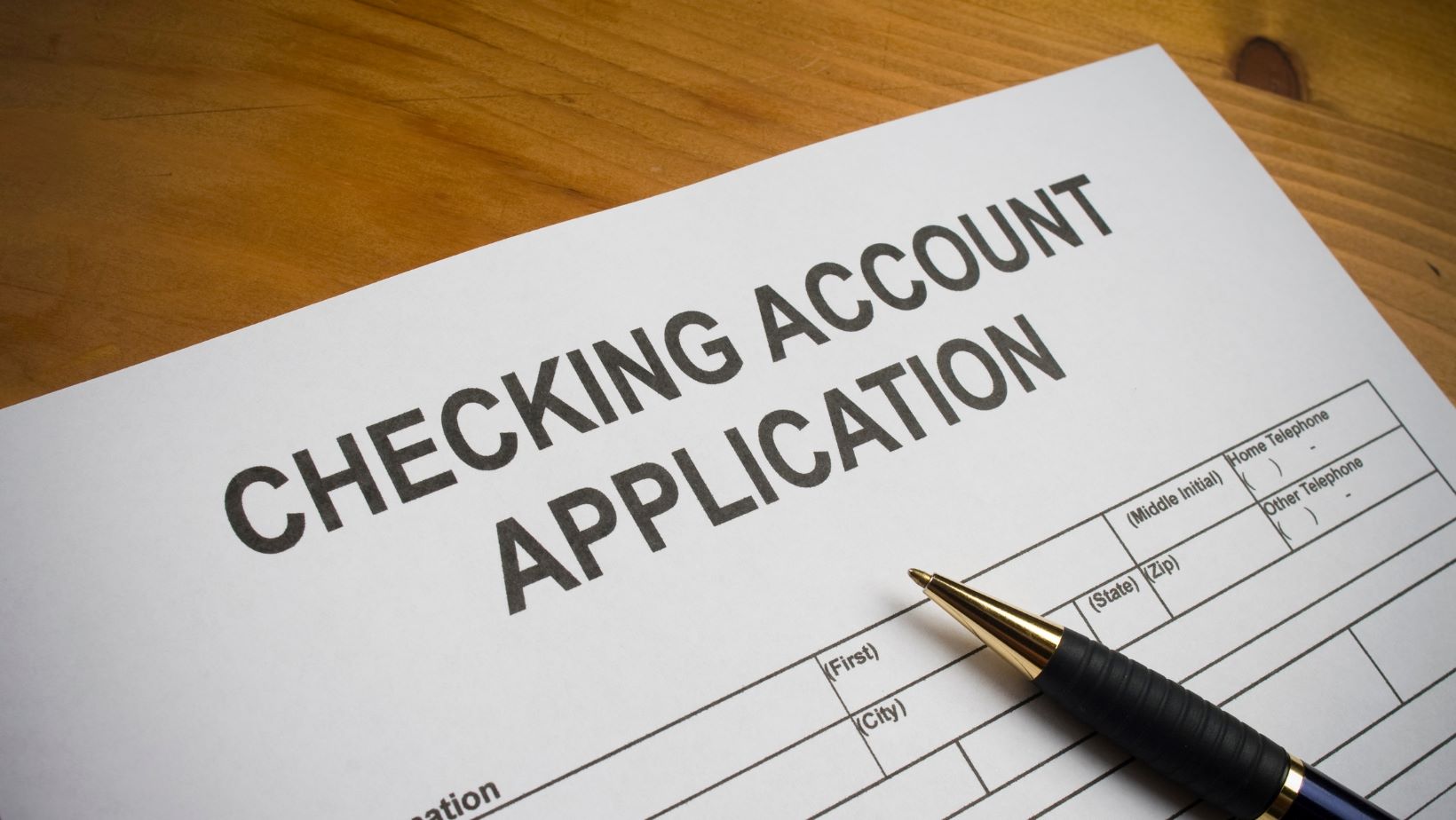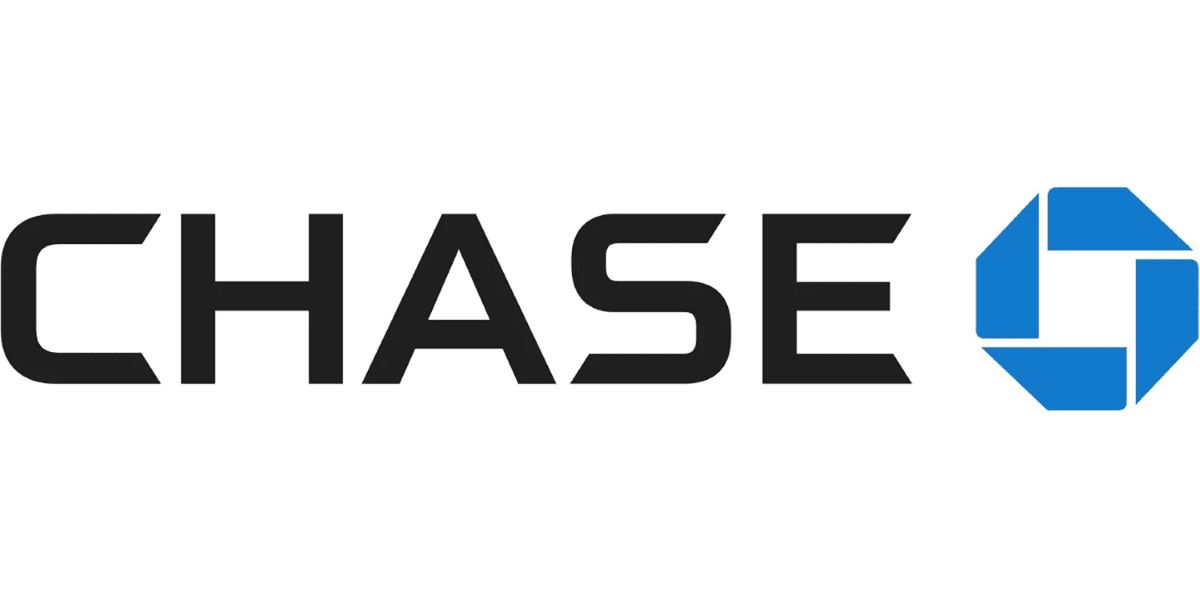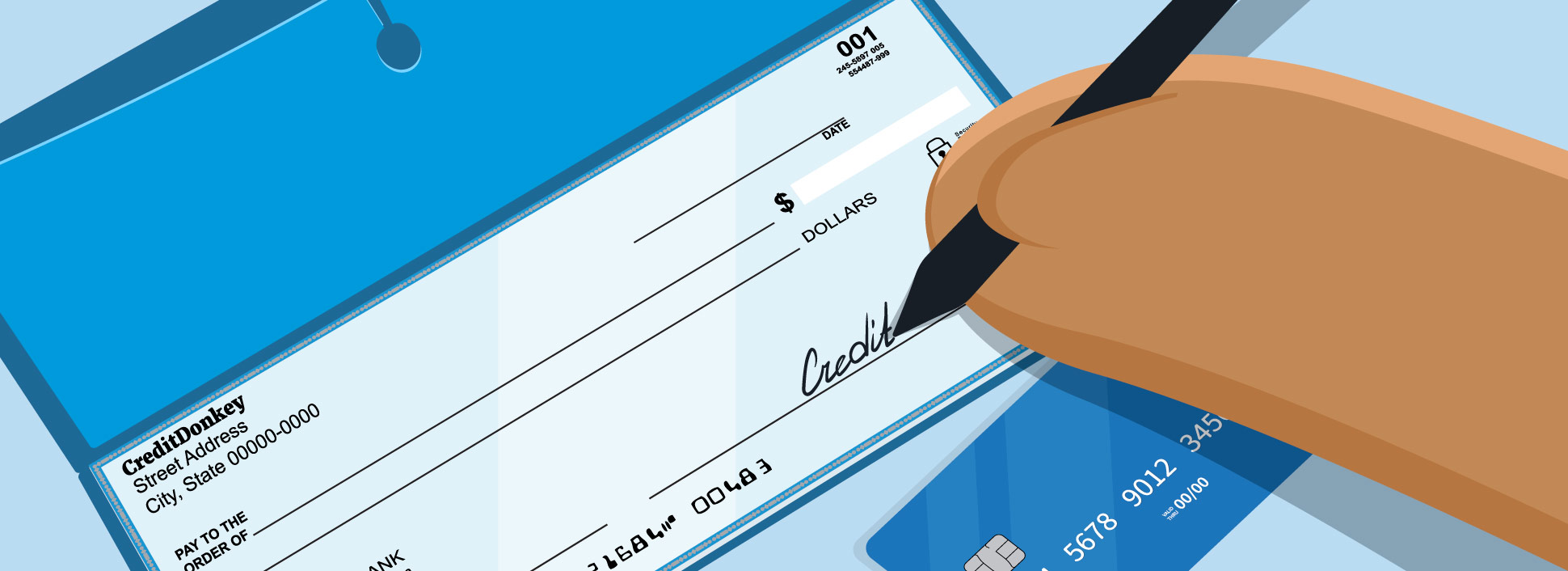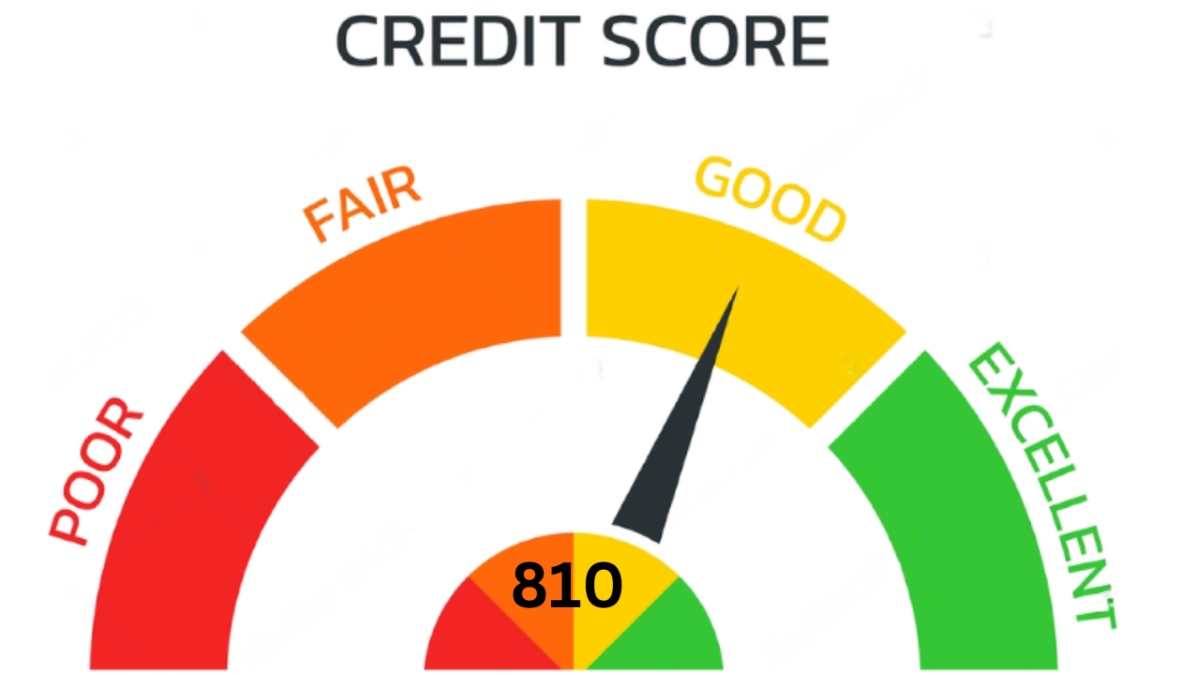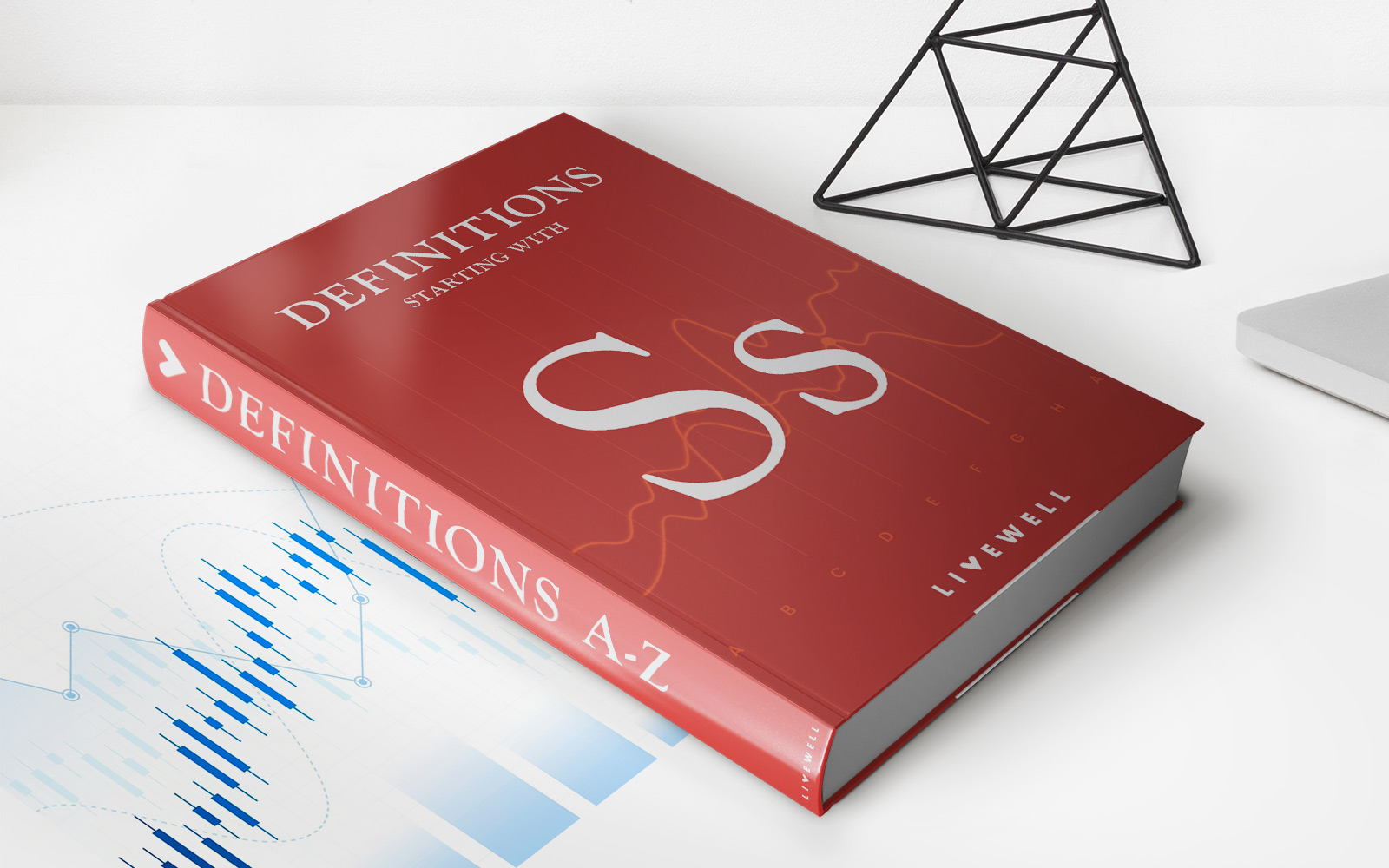Home>Finance>What Advice Would You Offer To Someone Who Is Considering Opening A Checking Account?


Finance
What Advice Would You Offer To Someone Who Is Considering Opening A Checking Account?
Modified: February 21, 2024
Considering opening a checking account? Get expert advice on finance and find out what you need to know before you make a decision.
(Many of the links in this article redirect to a specific reviewed product. Your purchase of these products through affiliate links helps to generate commission for LiveWell, at no extra cost. Learn more)
Table of Contents
- Introduction
- Understanding the Basics of a Checking Account
- Assessing Your Financial Needs and Goals
- Researching Different Checking Account Options
- Comparing Fees and Charges
- Reviewing Account Features and Benefits
- Considering the Bank’s Reputation and Customer Service
- Setting Up the Account
- Managing and Monitoring Your Checking Account
- Establishing a Budget and Stick to It
- Utilizing Online and Mobile Banking Tools
- Protecting Your Account and Personal Information
- Dealing with Overdrafts and Avoiding Fees
- Keeping Track of Your Transactions and Balances
- Reconciling Your Account Regularly
- Conclusion
Introduction
Opening a checking account is an important financial step that can help you manage your money efficiently and conveniently. Whether you’re a first-time account holder or considering switching banks, it’s crucial to understand the basics and carefully consider your options. This article will provide you with valuable advice on what to consider when opening a checking account and how to make the most of it.
A checking account is a type of bank account that allows you to deposit, withdraw, and manage your funds easily. It serves as a financial hub for your day-to-day transactions, such as paying bills, making purchases, and receiving direct deposits. Unlike a savings account, a checking account typically offers unlimited transactions, immediate access to funds, and the ability to write checks.
Before diving into the process of opening a checking account, take the time to assess your financial needs and goals. Think about how you plan to use the account and what features are important to you. Are you looking for a basic account with no monthly fees, or do you prefer one that offers additional perks and benefits?
Researching different checking account options is essential to finding the one that suits your needs. Start by exploring banks, credit unions, and online financial institutions. Pay attention to their reputation, accessibility, and the range of services they provide. Consider reading reviews and consulting with friends or family members who have experience with different banks.
Comparing fees and charges is a crucial step in choosing the right checking account. Banks may charge monthly maintenance fees, minimum balance requirements, or fees for using certain services. Make sure you understand the fee structure and evaluate whether the benefits of the account outweigh the costs.
Consider the bank’s customer service and reputation. Look for a bank that provides excellent customer support through various channels such as phone, email, or live chat. A reputable bank will have a strong track record in handling customer queries and resolving issues.
Understanding the Basics of a Checking Account
Before opening a checking account, it’s important to have a clear understanding of how it works and what to expect. A checking account is a type of bank account that allows you to deposit and withdraw money for day-to-day transactions. It serves as a convenient way to manage your finances and keep track of your spending.
When you open a checking account, you’ll receive a set of checks and a debit card. Checks can be used to make payments to individuals or businesses, while the debit card allows you to make purchases directly from your account. In addition to checks and debit cards, most banks also offer online and mobile banking services, providing easy access to your account at any time.
It’s important to note that a checking account is not designed to be a long-term savings tool. While it may earn a small amount of interest, the primary purpose of a checking account is to facilitate daily transactions and provide a safe place to store and access your money.
To use your checking account effectively, it’s important to keep track of your transactions and maintain a balanced account. This involves regularly reviewing your bank statements, tracking your spending, and reconciling any discrepancies. By doing so, you can avoid overdraft fees and ensure that you have enough funds to cover your expenses.
Another key aspect of understanding a checking account is knowing the different types available. Banks may offer various types of checking accounts, each with its own features and requirements. Some common types include basic checking accounts, interest-bearing accounts, and premium accounts. Consider your financial needs and preferences when choosing the type of account that best suits you.
Basic checking accounts are typically for individuals who require basic banking services with low or no monthly fees. These accounts may have limited features but are suitable for everyday banking needs. Interest-bearing accounts, on the other hand, allow you to earn a small amount of interest on your balance, though the rates may be relatively low.
Premium accounts, also known as high-yield or rewards checking accounts, offer additional perks such as higher interest rates, ATM fee reimbursements, and cashback rewards. These accounts usually require higher minimum balances and may come with higher monthly fees. Evaluate the features and benefits of each account type to determine which aligns best with your financial goals.
Assessing Your Financial Needs and Goals
Before opening a checking account, it’s crucial to assess your financial needs and goals. Understanding what you’re looking for in a bank account will help you find the right fit and maximize the benefits of your checking account.
Firstly, consider your daily banking requirements. How often do you need to make withdrawals or deposits? Are you frequently using your debit card for purchases? Understanding your transaction habits will help you choose an account that offers enough flexibility and convenience for your needs.
Next, think about your long-term financial goals. Are you saving for a specific milestone or planning for the future? If so, you may want to choose a checking account that provides additional features, such as the ability to link to a savings account or offers financial planning tools to help you reach your goals.
Furthermore, evaluate your budgeting and money management skills. If you prefer to have more control over your spending and want to track your expenses more efficiently, look for a checking account that offers robust online and mobile banking tools. These tools can help you set spending limits, categorize your transactions, and provide insights into your financial habits.
Consider your income and financial stability. Are you expecting regular direct deposits? Some banks offer advantages to customers who receive direct deposits, such as waived monthly fees or higher interest rates. Take this into account when choosing a checking account.
Additionally, think about your banking preferences. Do you prefer a physical branch location nearby, or are you comfortable conducting your banking transactions online? If branch accessibility is important to you, consider choosing a bank with a wide network of branches. On the other hand, if you prefer the convenience of online banking, look for a bank that offers robust digital services.
Lastly, don’t forget to consider any potential fees associated with the checking account. Some accounts may have monthly maintenance fees, ATM withdrawal fees, or overdraft fees. Make sure to review the fee structure and evaluate if the benefits and features of the account outweigh the costs.
By assessing your financial needs and goals, you can make an informed decision when choosing a checking account. Remember to prioritize convenience, flexibility, and the ability to align your account with your financial aspirations. Taking the time to assess your needs will ensure that your checking account becomes a valuable tool in managing your finances effectively.
Researching Different Checking Account Options
When it comes to choosing a checking account, it’s important to research and consider different options to find the one that best fits your needs. Here are some key factors to consider when researching different checking account options:
1. Types of Financial Institutions: Start by exploring different types of financial institutions, including traditional banks, credit unions, and online banks. Each type offers different advantages and may have distinct fee structures and services. Consider your preferences and priorities to determine which type suits you best.
2. Accessibility and Convenience: Assess the bank’s accessibility and convenience. Do they have branches located near your home or workplace? Are their ATMs easily accessible? If you prefer online banking, check if their website and mobile app are user-friendly and offer all the features you need, such as mobile check deposit or bill pay.
3. Account Features: Review the features and benefits offered by different checking accounts. Look for features that align with your financial needs, such as ATM fee reimbursements, 24/7 customer support, free online bill pay, and mobile banking tools. Consider both basic features and any additional perks that may be available.
4. Minimum Balance Requirements: Determine if the checking account has any minimum balance requirements. Some accounts may require you to maintain a certain minimum balance to avoid monthly service fees. Assess whether you can comfortably meet the specified minimum balance or if it aligns with your financial situation.
5. Fees and Charges: Take the time to understand the fee structure associated with each checking account. Common fees may include monthly maintenance fees, overdraft fees, ATM fees, or fees for using certain services. Compare the fees across different accounts and consider the impact they may have on your overall banking experience.
6. Interest Rates: While checking accounts generally offer lower interest rates compared to savings accounts, it’s still worth considering the interest rates offered by different banks. Look for accounts that provide competitive rates, especially if you plan to maintain a higher balance in your checking account.
7. Additional Services: Evaluate if the bank offers additional services that may be relevant to you. This could include access to a wide network of ATMs, free or discounted checks, or the ability to link your checking account to other financial products, such as savings accounts or credit cards.
8. Reviews and Recommendations: Read reviews and seek recommendations from friends, family, or online communities. User feedback and experiences can provide valuable insights into the quality of service and customer satisfaction offered by different banks or credit unions.
By thoroughly researching different checking account options, you can make an informed decision based on your financial needs, preferences, and long-term goals. Remember that finding the right checking account is a key step towards managing your money effectively and maximizing your financial well-being.
Comparing Fees and Charges
When opening a checking account, it’s crucial to compare the fees and charges associated with different accounts to ensure you’re choosing the most cost-effective option. Here are some key fees and charges to consider when comparing checking accounts:
1. Monthly Maintenance Fees: Many checking accounts come with a monthly maintenance fee. This fee is usually charged if certain criteria, such as maintaining a minimum balance, are not met. Compare the monthly maintenance fees across different accounts and assess whether you can meet the requirements to avoid them or if there are fee waivers available.
2. Overdraft Fees: Overdraft fees are charged when you spend more money than you have available in your checking account. These fees can quickly add up and put a strain on your finances. Compare the overdraft fees and policies of different banks. Some may offer overdraft protection options, such as linking your checking account to a savings account or a line of credit, while others may charge higher fees.
3. ATM Fees: Assess the types and amounts of ATM fees associated with different accounts. Banks may charge fees for using out-of-network ATMs or for exceeding a certain number of monthly ATM transactions. Consider the accessibility of the bank’s ATM network, as well as any reimbursement policies for ATM fees incurred at other banks’ ATMs.
4. Foreign Transaction Fees: If you frequently travel internationally or make purchases in foreign currencies, consider the foreign transaction fees associated with different checking accounts. These fees can vary widely and may significantly impact your spending while abroad. Look for accounts that offer low or waived foreign transaction fees if this is a consideration for you.
5. Paper Statement Fees: Some banks may charge fees if you prefer to receive paper statements instead of electronic statements. If you prefer to have physical statements mailed to you, compare the costs associated with different accounts.
6. Check Fees: Determine if there are any fees associated with ordering or using checks. While checks may not be as commonly used as they once were, it’s still important to assess the fees in case you need to write a check for certain payments.
7. Miscellaneous Fees: Be aware of any other miscellaneous fees that may apply to your checking account. These could include fees for stop payments, returned checks, account research, or excessive transactions. Compare the fees across different banks and assess how likely you are to incur these charges based on your banking habits.
When comparing fees, it’s also important to consider the overall value and benefits offered by each checking account. A bank with slightly higher fees may provide additional perks such as ATM fee reimbursements, high-interest rates, or excellent customer service, which could outweigh the fees in terms of overall value.
By thoroughly comparing the fees and charges associated with different checking accounts, you can make an informed decision that aligns with your financial goals and helps you avoid unnecessary costs. Remember to consider both the fees themselves and the overall value provided by the account.
Reviewing Account Features and Benefits
When choosing a checking account, it’s important to carefully review the features and benefits offered by different banks to find the account that meets your needs. Here are some key aspects to consider when reviewing the account features and benefits:
1. Online and Mobile Banking: Evaluate the online and mobile banking capabilities of each checking account. Does the bank offer a well-designed and user-friendly website and mobile app? Look for features such as mobile check deposit, bill pay services, and the ability to easily view your account balances and transaction history.
2. ATM Network: Consider the accessibility of the bank’s ATM network. Are there conveniently located ATMs near your home, workplace, or other frequently visited areas? Look for banks that have a wide ATM network, as well as those that provide fee reimbursements for out-of-network ATM usage.
3. Debit Card Benefits: Assess any additional benefits associated with the debit card provided with the checking account. Some banks offer incentives such as cashback rewards, discounts on purchases, or extended warranty protection when using their debit card.
4. Overdraft Protection: Look for checking accounts that offer overdraft protection options. This feature can help protect you from incurring hefty overdraft fees by automatically transferring funds from linked accounts, such as savings accounts or lines of credit, to cover any overdrafts.
5. Linked Savings Account: Consider if the bank provides the option to link your checking account to a savings account. This allows for easy transfers between accounts and may help you consolidate your financial accounts with one institution.
6. Additional Account Services: Review any additional services offered with the checking account. This may include features such as online bill pay, person-to-person payment options, and the ability to set up automatic transfers or payments.
7. Interest Rates: While checking accounts generally offer lower interest rates compared to savings accounts, it’s still worth considering the interest rate offered. Especially if you expect to maintain a higher balance in your checking account, a higher interest rate can help your money grow over time.
8. Account Alerts and Notifications: Determine if the bank offers account alerts and notifications. These can be helpful in keeping you informed about your account activity, such as low balances, large withdrawals, or upcoming bill payments.
9. Customer Support: Assess the quality of customer support provided by each bank. Look for banks that offer multiple channels of customer support, such as phone, email, or live chat. Reliable and responsive customer service is important in addressing any questions or concerns you may have.
10. Special Account Features: Some banks offer unique features or account types tailored to specific needs. These may include accounts for students, seniors, or small business owners. Evaluate if any special account features are relevant to your situation and could provide additional benefits.
By reviewing the account features and benefits, you can choose a checking account that aligns with your preferences and provides the services you need to effectively manage your finances. Consider your individual banking habits and priorities to find an account that offers the right combination of features, convenience, and added benefits for your financial journey.
Considering the Bank’s Reputation and Customer Service
When opening a checking account, it’s essential to consider the reputation and customer service of the bank to ensure a positive banking experience. Here are some key factors to consider when evaluating a bank’s reputation and customer service:
1. Bank’s Reputation: Research the bank’s reputation by reading customer reviews and ratings. Look for feedback on review websites, social media platforms, and consumer advocacy groups. Consider factors such as the bank’s stability, reliability, and overall customer satisfaction. A bank with a solid reputation is more likely to provide reliable services and be responsive to customer needs.
2. Customer Service: Evaluate the bank’s customer service by assessing factors such as accessibility, responsiveness, and friendliness. Check if the bank offers multiple channels of customer support, such as phone, email, or live chat. Prompt and helpful customer service can make a significant difference when dealing with any issues or inquiries that may arise.
3. Branch Availability: If the availability of physical branches is important to you, consider the bank’s branch network. Evaluate if there are branches conveniently located near your home, workplace, or other frequently visited areas. A bank with a wide branch network can provide ease of access, in-person assistance, and additional services.
4. Online and Mobile Banking Experience: Assess the bank’s online and mobile banking platforms. A user-friendly and well-designed website and mobile app can enhance your banking experience by providing convenient access to your account, easy-to-use features, and intuitive navigation. Look for features such as mobile check deposit, bill pay services, and real-time account information.
5. Security Measures: Consider the bank’s security measures in place to protect your account and personal information. Look for banks that utilize encryption, multi-factor authentication, and other security protocols to safeguard your funds and data. Verified security practices can provide peace of mind and minimize the risk of fraud or unauthorized access.
6. Reputation of Management: Research the reputation and track record of the bank’s management team. Look for transparency, competence, and ethical practices. A well-managed bank is more likely to provide a strong foundation for its products, services, and customer relationships.
7. Awards and Recognitions: Take note of any awards or recognitions received by the bank. Prestigious awards can indicate excellence in services, innovative offerings, or customer satisfaction. While not the sole determining factor, such awards can provide additional reassurance of the bank’s commitment to providing a positive banking experience.
By considering the bank’s reputation and customer service, you can ensure that your checking account is with a trustworthy and reliable financial institution. A bank with a strong reputation and excellent customer service will not only offer a smooth banking experience but also provide support when needed and address any concerns or issues promptly.
Setting Up the Account
Once you have selected the checking account that best fits your needs and preferences, it’s time to set up the account. Here are the steps to consider when opening a checking account:
1. Gather the Required Documents: Before heading to the bank or starting the online application process, gather all the necessary documents. This typically includes a government-issued identification such as a driver’s license or passport, proof of address (such as a utility bill), and your Social Security number. Some banks may require additional documentation, so it’s always a good idea to check their specific requirements beforehand.
2. Choose Between In-Person or Online Account Opening: Decide whether you want to open the account in-person or online. If you prefer the convenience of online banking, many banks offer a seamless online account opening process. However, if you have specific questions or prefer face-to-face interaction, visiting a branch may be the better option.
3. Provide Personal Information: Whether you’re opening the account in-person or online, you will need to provide personal information, including your name, address, date of birth, and Social Security number. Be prepared to answer questions related to your employment, income, and other financial details, as this information is essential for the bank to verify your identity and assess your eligibility for the account.
4. Deposit Funds: Determine the initial deposit amount required to open the checking account. It can vary depending on the bank and the type of checking account you choose. Transferring funds from another account or depositing cash or a check are common methods to fund your new account. Some banks may also allow you to make the initial deposit online via a credit or debit card.
5. Review Account Terms and Conditions: Take the time to read and understand the account terms and conditions, including fee structures, withdrawal limits, and any restrictions or limitations that may apply. Knowing the rules associated with your checking account will help you make informed decisions and avoid unnecessary fees or penalties.
6. Set Up Additional Services: If you are interested in additional services, such as online bill payment, direct deposit, or overdraft protection, inquire about the steps required to set up these services during the account opening process. Often, these can be easily added to your checking account as they provide added convenience and flexibility.
7. Obtain Account Access: Once your account is set up, you will receive account access information, such as your account number, routing number, and any necessary login credentials. If you’re opening an account in-person, the bank representative will guide you through the process and help you set up any necessary online banking access.
8. Activate Debit Card: If a debit card is provided with your checking account, you will need to activate it. Follow the instructions provided by the bank or call the designated phone number to activate your card. Be sure to sign the back of the card for added security.
9. Update Automatic Payments and Direct Deposits: If you have any automatic payments or direct deposits set up with your previous bank, it’s crucial to update them with your new checking account information. This ensures that your bills get paid on time and your income is deposited into your new account.
Setting up a checking account is an important step towards managing your finances effectively. By following these steps and providing the necessary information, you can open your account smoothly and start enjoying the benefits and conveniences it offers.
Managing and Monitoring Your Checking Account
Once you have successfully opened a checking account, it’s important to actively manage and monitor it to ensure your financial well-being. Here are key practices to help you effectively manage and monitor your checking account:
1. Establish a Budget and Stick to It: Create a budget to track your income and expenses. This will help you understand where your money is going and make informed financial decisions. Allocate funds for essential expenses, savings, and discretionary spending. Regularly review and adjust your budget as needed.
2. Utilize Online and Mobile Banking Tools: Take advantage of the online and mobile banking tools offered by your bank. These tools provide convenience and accessibility, allowing you to view your account balances, track transactions, set up alerts, and make transfers or payments. Regularly monitor your account activity to quickly identify any unauthorized transactions or errors.
3. Protect Your Account and Personal Information: Safeguard your account and personal information by using secure passwords, enabling two-factor authentication, and being cautious of phishing attempts. Regularly review your account statements and dispute any unauthorized charges promptly. Notify your bank immediately if you suspect any fraudulent activity.
4. Deal with Overdrafts and Avoiding Fees: Keep track of your account balances to avoid overdraft fees. Set up alerts to notify you when your account balance is low. If you accidentally overdraft your account, deposit funds as soon as possible to cover the negative balance and minimize fees. Consider linking your account to a savings account or line of credit for overdraft protection.
5. Keep Track of Your Transactions and Balances: Regularly review your transaction history and compare it with your budget or financial records. Ensure that all transactions are accurate and authorized. Keep track of deposits, withdrawals, and any fees charged to your account. This will help you identify any discrepancies or errors that need to be addressed.
6. Reconcile Your Account Regularly: Reconcile your checking account on a regular basis. This involves comparing your account statement with your own records to ensure that they match. By doing so, you can identify any missing transactions, errors, or discrepancies. Reconciling your account helps to maintain accurate financial records and provides a clear picture of your financial situation.
7. Review and Evaluate Account Activity: Periodically review your account activity to identify any trends or patterns in your spending habits. Analyze where your money is going and assess if it aligns with your financial goals. Use this information to make adjustments to your budget and financial plans as necessary.
8. Set Financial Goals: Set short-term and long-term financial goals. Whether it’s saving for a down payment, paying off debt, or building an emergency fund, having clear goals will help you stay focused and motivated. Regularly track your progress and make adjustments to your financial strategies to meet your goals.
9. Seek Help and Advice: If you’re facing financial challenges or have questions, don’t hesitate to seek help and advice. Reach out to your bank’s customer service, consult a financial advisor, or participate in financial literacy programs. Understanding and managing your checking account effectively is crucial to your overall financial well-being.
By actively managing and monitoring your checking account, you can stay in control of your finances, avoid unnecessary fees, and make progress towards your financial goals. Regularly review your financial habits, remain vigilant against fraudulent activity, and utilize the available tools and resources to maximize the benefits of your checking account.
Establishing a Budget and Stick to It
Establishing a budget is an essential step in effectively managing your financial resources, including your checking account. A budget provides a framework for allocating your income, tracking your expenses, and ensuring that you are living within your means. Here’s how to establish a budget and stick to it:
1. Determine Your Income: Start by calculating your total monthly income. Include all sources of income, such as your salary, freelance work, rental income, or side hustle earnings. Understanding your income is crucial as it forms the basis for budgeting decisions.
2. Track Your Essential Expenses: Identify and categorize your essential expenses, such as housing costs, utilities, transportation, groceries, and healthcare. These are expenses that you must pay to maintain a basic standard of living. Be thorough and include all necessary expenses to ensure an accurate representation of your financial obligations.
3. Allocate Funds for Savings: Set aside a portion of your income for savings. Establish an emergency fund to cover unexpected expenses, and consider long-term savings goals, such as retirement or down payments for a home. Saving regularly will help you build a financial cushion and ensure financial stability in the future.
4. Determine Discretionary Spending: Assess your discretionary spending or non-essential expenses. This includes dining out, entertainment, shopping, and other non-essential items. Set a limit for this category and prioritize your spending based on your values and goals. It’s essential to be mindful of your discretionary spending to avoid overspending or living beyond your means.
5. Monitor and Adjust: Regularly monitor your actual expenses and compare them against your budgeted amounts. Use online banking tools or budgeting apps to track your spending and identify areas where you may be overspending. Adjust your budget as needed to ensure it remains realistic and aligned with your financial goals.
6. Plan for Irregular Expenses: Anticipate irregular expenses, such as annual subscriptions, property taxes, or vacation costs. Allocate funds for these expenses by dividing the total amount by the number of months until they are due. Setting aside money each month will prevent these irregular expenses from derailing your budget.
7. Automate Your Bills and Savings: Take advantage of automation to simplify your budgeting process. Set up automatic bill payments to ensure your essential expenses are paid on time and avoid late fees. Additionally, automate your savings by setting up automatic transfers from your checking account to your savings account. This will make it easier to consistently save without relying on remembering to manually transfer funds.
8. Stay Disciplined: Discipline is key to sticking to your budget. Avoid impulsive purchases and be mindful of your spending decisions. Before making a non-essential purchase, consider if it aligns with your priorities and if it fits within your budget. Regularly review your financial goals to stay motivated and focused on your long-term financial well-being.
9. Be Flexible: While it’s important to stick to your budget, life is full of unexpected events and changes. Be flexible and willing to adjust your budget if necessary. Adapt to new circumstances, such as changes in income, new financial goals, or unexpected expenses. Regularly reassess and reallocate your budget as needed to accommodate these changes.
Establishing and sticking to a budget is a valuable financial habit that can help you manage your checking account effectively. By understanding your income, tracking your expenses, and making intentional spending decisions, you can achieve your financial goals, avoid unnecessary debt, and build a solid financial foundation.
Utilizing Online and Mobile Banking Tools
Online and mobile banking tools have revolutionized the way we manage our finances. These digital platforms provide convenient and accessible ways to track our accounts, make transactions, and stay in control of our financial lives. Here are the key benefits of utilizing online and mobile banking tools:
1. Account Access Anytime, Anywhere: Online and mobile banking give you 24/7 access to your checking account. Whether you’re at home, at work, or on the go, you can quickly and easily check your account balance, view transaction history, and monitor your finances. This accessibility allows you to stay informed and make timely financial decisions.
2. Online Bill Payment: Online banking tools enable you to conveniently pay bills electronically. Instead of writing checks or relying on mail delivery, you can schedule recurring payments or make one-time payments directly from your checking account. This saves time, reduces paperwork, and enhances the accuracy and security of your transactions.
3. Mobile Check Deposit: Many banks now offer mobile check deposit, allowing you to deposit checks using your smartphone or tablet. Simply take a picture of the front and back of the check and submit it through the mobile banking app. This eliminates the need to visit a physical branch or ATM, saving you time and providing faster access to your funds.
4. Instant Funds Transfers: With online and mobile banking, you can easily transfer funds between your checking account and other accounts, such as savings or investment accounts. This flexibility allows you to efficiently manage your money, move funds as needed, and take advantage of various financial opportunities.
5. Transaction Alerts and Notifications: Set up alerts and notifications through online and mobile banking to stay informed about your account activity. You can receive alerts for low balances, large transactions, upcoming bill due dates, or suspicious activity. These notifications help you stay on top of your finances and detect any potential fraudulent activity.
6. Budgeting Tools: Many online and mobile banking platforms provide built-in budgeting tools or integrate with popular budgeting apps. These tools allow you to set financial goals, categorize your expenses, and track your spending. By utilizing these budgeting tools, you can gain better insights into your financial habits and make informed decisions to achieve your financial goals.
7. eStatements: Instead of receiving paper statements in the mail, online banking allows you to receive electronic statements, known as eStatements. These statements are secure, easily accessible, and help reduce clutter. You can view and download your statements at any time, making it easier to review your transactions and maintain accurate financial records.
8. Enhanced Security Features: Online and mobile banking platforms prioritize security and employ various measures to protect your account and personal information. These may include multi-factor authentication, encryption, and biometric login options. Take advantage of these advanced security features to ensure the integrity and confidentiality of your financial data.
9. Customer Support: Most online and mobile banking apps provide customer support options, such as live chat or phone assistance. If you have questions, encounter technical issues, or need clarification on any banking-related matter, you can easily reach out to the bank’s customer service team for assistance.
By utilizing online and mobile banking tools, you can easily and efficiently manage your checking account. From accessing your account information to conducting transactions and tracking your expenses, these digital platforms offer convenience, accessibility, and control over your finances. Take advantage of the features and benefits provided by online and mobile banking to optimize your financial management and stay on top of your financial goals.
Protecting Your Account and Personal Information
Protecting your checking account and personal information is crucial in maintaining financial security and preventing fraudulent activities. Here are some important steps to take to safeguard your account:
1. Use Strong and Unique Passwords: Create strong passwords for your online banking accounts. Use a combination of uppercase and lowercase letters, numbers, and special characters. Avoid using easily guessable information such as your name or birthdate. Additionally, use unique passwords for each account to minimize the risk of multiple accounts being compromised if one password is breached.
2. Enable Two-Factor Authentication (2FA): Two-factor authentication adds an extra layer of security to your online banking accounts. It requires you to provide an additional verification method, such as a fingerprint scan, SMS code, or authentication app, when logging in. Enable 2FA whenever possible to protect your account from unauthorized access.
3. Be Cautious of Phishing Attempts: Be wary of phishing attempts, where scammers may try to trick you into revealing sensitive information or login credentials. Be cautious of emails or text messages that ask for personal information or contain suspicious links. Only provide sensitive information through secure and trusted channels, such as the official banking website or customer service phone numbers.
4. Avoid Using Public Wi-Fi for Banking Transactions: Public Wi-Fi networks are not secure and can expose your personal information to potential hackers. Whenever possible, avoid conducting banking transactions or accessing sensitive information while connected to public Wi-Fi. If you must use public Wi-Fi, consider using a virtual private network (VPN) to encrypt your internet connection and add an extra layer of security.
5. Regularly Monitor Your Account Activity: Stay vigilant by regularly monitoring your account activity. Review your bank statements, transaction history, and alerts for any unauthorized or suspicious activity. Report any discrepancies or fraudulent charges to your bank immediately. Early detection is key in minimizing the impact of fraud on your account.
6. Protect Your Devices: Keep your devices secure by using up-to-date antivirus software and installing regular security updates. Set up a screen lock or fingerprint authentication for your mobile devices to prevent unauthorized access. Avoid clicking on suspicious links or downloading apps from unknown sources that may contain malware or spyware.
7. Be Mindful of Sharing Personal Information: Be cautious about sharing personal information, both online and offline. Avoid providing sensitive information through email or over the phone unless you are certain of the recipient’s identity and the security of the communication. Be wary of sharing personal details on social media platforms, as cybercriminals can use this information to target you.
8. Regularly Review Privacy Policies: Familiarize yourself with your bank’s privacy policies and understand how they handle and protect your personal information. Pay attention to any updates or changes to the policies and take necessary action if you have concerns about the privacy and security of your data.
9. Stay Informed and Educated: Stay updated on the latest cybersecurity threats and techniques used by scammers. Educate yourself about common scams and phishing methods, and share this knowledge with family and friends. Stay informed through official sources, such as your bank’s website, government cybersecurity agencies, or reputable cybersecurity publications.
By taking proactive measures to protect your account and personal information, you can minimize the risk of fraud and maintain the security of your checking account. Stay vigilant, stay informed, and promptly report any suspicious activities to your bank to ensure a safe and secure banking experience.
Dealing with Overdrafts and Avoiding Fees
Overdrafts can occur when you spend more money than is available in your checking account, leading to potential fees and financial stress. However, with careful management and adherence to good financial practices, you can effectively deal with overdrafts and avoid associated fees. Here are some key strategies to consider:
1. Monitor Your Balances: Regularly monitor your checking account balances to ensure you have sufficient funds. Review your transactions and upcoming bills to anticipate any potential overdraft situations. Many banks offer online or mobile banking tools that allow you to check your current balance easily and conveniently.
2. Set up Account Alerts: Take advantage of account alerts offered by your bank. Set up notifications to receive alerts when your account balance falls below a certain threshold. This will help you stay aware of your account’s balance and avoid unintentional overdrafts.
3. Link to a Savings Account: Consider linking your checking account to a savings account for overdraft protection. In the event of an overdraft, funds can be automatically transferred from your linked savings account to cover the negative balance, minimizing potential fees. However, be aware that there may still be transfer fees associated with this service, so review your bank’s policies and fees beforehand.
4. Opt out of Overdraft Protection: If you prefer not to have overdraft protection, you can opt out of the service. This means that your transactions will be declined if you do not have sufficient funds, potentially saving you from overdraft fees. However, be cautious about any associated non-sufficient funds (NSF) fees that may apply when transactions are declined.
5. Maintain a Buffer in Your Account: Keep a buffer amount in your checking account to act as a cushion. By maintaining a minimum balance that covers your anticipated expenses, you can mitigate the risk of overdrafts. This buffer amount should be above any required minimum balance and take into consideration any upcoming bills or payments.
6. Opt for Overdraft Protection Line of Credit: Some banks offer an overdraft protection line of credit, which serves as a loan to cover overdrafts. This option provides a safety net and can be less expensive than traditional overdraft fees. Assess the terms, interest rates, and repayment requirements before opting for this type of overdraft protection.
7. Keep Track of Outstanding Transactions: Be mindful of any outstanding transactions that have yet to be processed. These can include checks you have written but have not been cashed, pending payments, or pending debit card transactions. Deduct these amounts from your available balance to ensure you have an accurate picture of your funds.
8. Familiarize Yourself with Your Bank’s Policies: Understand your bank’s policies and fees related to overdrafts. Review the terms and conditions of your checking account, paying close attention to the fees associated with overdrafts, nonsufficient funds (NSF), and any grace periods. Being aware of your bank’s policies will help you avoid surprises and make informed financial decisions.
9. Track Your Transactions and Balances Consistently: Regularly reconcile your checking account by comparing your bank statements with your own records. Ensure all transactions are accounted for and resolve any discrepancies promptly. By staying on top of your transactions and balances, you can better manage your finances and avoid overdrafts.
10. Establish an Emergency Fund: Build an emergency fund to serve as a financial buffer. Having savings that can cover unexpected expenses reduces the risk of relying on overdrafts in times of financial emergencies. Start by setting aside small amounts regularly and gradually increase your savings over time.
Dealing with overdrafts requires vigilance and responsible financial practices. By monitoring your balances, setting up alerts, utilizing available overdraft protection options, and maintaining good financial habits, you can effectively manage your checking account and avoid expensive overdraft fees.
Keeping Track of Your Transactions and Balances
Keeping track of your transactions and balances is crucial for effectively managing your checking account and maintaining financial stability. By monitoring your account activity regularly, you can ensure accuracy, catch errors or fraudulent charges, and have a clear understanding of your financial position. Here are key strategies to help you keep track of your transactions and balances:
1. Review Account Statements: Regularly review your bank statements, whether they are received electronically or by mail. Take the time to go through each transaction to verify its accuracy. If you notice any discrepancies or unauthorized charges, contact your bank immediately to report and resolve the issue.
2. Utilize Online and Mobile Banking Tools: Take advantage of the online and mobile banking tools provided by your bank. Monitor your transactions, view your account balance, and set up alerts or notifications for specific activities, such as large withdrawals or low balances. These tools provide real-time access to your account information, allowing you to stay on top of your finances.
3. Record Transactions in a Check Register or Digital Tracker: Maintain a check register or use a digital tracker to record all your transactions. This includes deposits, withdrawals, debit card purchases, and checks written. Keeping an accurate record allows you to cross-reference your bank statements and reconcile any discrepancies that may arise.
4. Categorize Your Expenses: Categorize your expenses to gain insights into your spending habits. Group your transactions into categories, such as groceries, utilities, entertainment, and transportation. This helps you identify areas where you may be overspending or need to make adjustments to align with your financial goals.
5. Track Outstanding Transactions: Keep track of outstanding transactions that have not yet cleared your account. This includes checks you have written but have not been cashed, outstanding debit card transactions, or pending electronic payments. Deduct these amounts from your available balance to provide a more accurate representation of your funds.
6. Reconcile Your Account Regularly: Regularly reconcile your checking account to ensure the accuracy of your transactions and balances. Compare your own records, such as your check register or digital tracker, with your bank statement. Identify any discrepancies and resolve them promptly with your bank. Reconciling your account helps prevent errors and ensures your financial records are up to date.
7. Use Budgeting Apps or Spreadsheets: Consider utilizing budgeting apps or spreadsheets to track your transactions and balances. These tools automate the process, categorize your expenses, and provide visual representations of your financial information. They can also generate reports and graphs, making it easier to analyze your spending habits and adjust your budget accordingly.
8. Set aside Regular Time for Financial Check-ins: Schedule regular check-ins to review your account activity and financial progress. This can be done weekly or monthly, depending on your preference. Use this time to update your transactions, assess your budget, and make any necessary adjustments to stay on track with your financial goals.
9. Monitor Alerts and Notifications: Pay attention to alerts and notifications sent by your bank or through your online banking platform. These can include low balance alerts, large withdrawal notifications, or any suspicious activity alerts. Promptly address any issues flagged in these alerts to prevent financial disruptions or potential fraud.
Maintaining a clear picture of your transactions and balances is crucial for effective financial management. By reviewing your statements, utilizing online and mobile banking tools, recording transactions, and reconciling your account regularly, you can stay in control of your finances and make informed financial decisions.
Reconciling Your Account Regularly
Reconciling your checking account regularly is an important financial practice that helps ensure the accuracy of your transactions and balances. By comparing your own records with your bank statement, you can identify any discrepancies or errors, and maintain an accurate picture of your financial health. Here’s how to effectively reconcile your account:
1. Gather Your Records: Gather all relevant financial records, including your bank statements, check register, or digital transaction tracker. These documents provide a reference for comparing and cross-referencing your transactions.
2. Compare Your Records with Your Bank Statement: Start by comparing the transactions listed in your records (check register or digital tracker) with the transactions listed on your bank statement. Check for any discrepancies, such as missing or duplicate transactions, and mark them for further investigation.
3. Verify Deposits and Withdrawals: Verify that all deposits and withdrawals listed on your bank statement match the corresponding entries in your records. Pay special attention to any large or unusual transactions that may require additional scrutiny.
4. Look Out for Outstanding Transactions: Take note of any outstanding transactions that have not yet cleared your account. These can include checks you have written but have not been cashed, outstanding debit card transactions, or pending electronic payments. Deduct these amounts from your account balance to provide a more accurate representation of your available funds.
5. Rectify Discrepancies: If you identify any discrepancies or errors during the reconciliation process, investigate further to determine the cause. It could be a mistake made by either you or the bank, such as an incorrect amount, missing transaction, or an unauthorized charge. Contact your bank immediately to report any discrepancies and request a correction if necessary.
6. Update Your Records: Make the necessary updates to your records based on the information from your bank statement. Note any corrections, additions, or removals of transactions. Ensure your records accurately reflect the transactions processed by your bank.
7. Reconcile Balances: Compare the ending balance listed on your bank statement with the ending balance in your records. They should match. If they don’t, recheck your transactions and make sure all entries are accounted for. Remember to consider any outstanding transactions that may affect your available balance.
8. Investigate Discrepancies Promptly: If you encounter discrepancies that cannot be resolved or require further investigation, contact your bank immediately. Provide them with the details of the issue and any supporting documentation. Promptly resolving discrepancies helps keep your financial records accurate and ensures the integrity of your account.
9. Repeat Reconciliation Regularly: Reconcile your account regularly, ideally on a monthly basis or at the frequency that works best for you. Consistent reconciliation allows you to promptly identify and rectify any errors or discrepancies, giving you a clear and accurate understanding of your financial position.
Reconciling your checking account is an essential practice that helps maintain the integrity of your financial records and ensures accurate financial decision-making. By comparing your transactions, verifying balances, and promptly addressing any discrepancies, you can stay on top of your finances and have peace of mind knowing your account is accurate and up to date.
Conclusion
Opening and managing a checking account is a fundamental step in maintaining financial stability and achieving your financial goals. By understanding the basics of a checking account, assessing your financial needs, and researching different account options, you can find the account that best suits your requirements.
Reviewing account features and benefits, comparing fees and charges, and considering the bank’s reputation and customer service are important factors to consider when choosing a checking account. These steps will help you ensure the account aligns with your financial goals and provides the necessary tools and services to manage your finances effectively.
Once you have opened a checking account, it’s essential to actively manage and monitor it. Establishing a budget, utilizing online and mobile banking tools, protecting your account and personal information, and avoiding fees are key practices to help you make the most of your checking account while safeguarding your financial security.
Dealing with overdrafts, keeping track of your transactions and balances, and reconciling your account regularly are strategies that can help you maintain accuracy, avoid fees, and stay on top of your financial health. By adopting these practices, you can effectively manage your checking account, make informed financial decisions, and stay in control of your financial well-being.
In conclusion, opening a checking account is an important financial step that requires careful consideration and proactive management. By understanding the various aspects of a checking account and implementing good financial practices, you can optimize the benefits of your account, protect your financial security, and work towards achieving your long-term financial goals.
